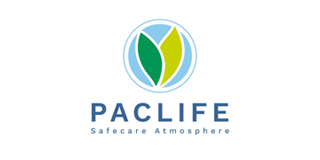

Paclife
Packaging
Advantages of Flowpack Packaging for Export Apples
Innovations in packaging and varietal adaptation ensure the competitiveness and sustainability of Chilean apple exports, highlighting the key role of Paclife and its Film Flowpack technology

Apples remain Chile's primary export product by volume, surpassing cherries and grapes. Estimated production for the 2023/24 season, according to the USDA (United States Department of Agriculture), stands at 860,000 tons, with projected exports reaching 463,000 tons. According to ODEPA data, the main producing regions are Maule and O'Higgins, which account for 84.4% of the total planted area. Domestic consumption is estimated at 410,000 metric tons. Álvaro Sepúlveda, a researcher from the Pomaceous Center at the University of Talca, highlighted at the conference that the industry is at a turning point, with growing interest in transitioning apple varieties to meet dynamic and demanding markets. Lorena Pinto, Head of Pomaceous and Cherry Products at A.N.A Chile, emphasized the importance of this transition to ensure profitability and product quality.
Innovations in Packaging
Paclife has revolutionized apple packaging with its Film Flowpack technology, designed to maintain fruit freshness and firmness both in e-commerce and retail shelves. This active and intelligent film is suitable for variable temperature environments and cold chains, ensuring safety while preserving the organoleptic characteristics of apples. Additionally, it enhances product presentation with its basal seal and glossy finish, allows for automated packing processes, reduces plastic usage by 56%, and generates packaging cost savings. In addition to this technology, Paclife offers other packaging alternatives, including bags in various formats such as fixed weight, 3-pound bags, Pouch Bags, Modified Atmosphere Bags (19 kg format), Fixed Weight Apple Packaging, LDPE Wicket Bags with perforations and printing.
Evolving Market
As previously mentioned, USDA data indicates apple production in Chile for the 2023/24 season is estimated at 860,000 tons, an 11% decrease from the previous season, due to a lack of accumulated chill hours delaying the harvest by approximately 15 days. Domestic consumption is expected to decrease by 26%, reaching 410,000 metric tons (MT), while exports are projected to amount to 463,000 tons, a 13% decrease from the 2022/23 campaign. Despite these challenges, apples remain Chile's leading export product by volume, surpassing other national fruit icons.
Spanish academic Joaquín Carbo, a researcher from IRTA and speaker at Poma Expo, highlighted opportunities for adapting different apple varieties to Chile's diverse climate. He stressed the need for varieties that not only offer high quality but also adapt to changing climatic conditions, ensuring long-term sustainability and profitability.
It is clear that innovation in packaging and adaptation to new varieties are crucial for the future of the apple industry in Chile. Paclife, with its Film Flowpack technology, leads these innovations, providing solutions that improve product quality and presentation, optimize processes, and reduce costs. As the industry faces climate and market challenges, these innovations will be essential to maintaining the competitiveness and sustainability of Chilean apple exports.



.jpg)
.jpg)












